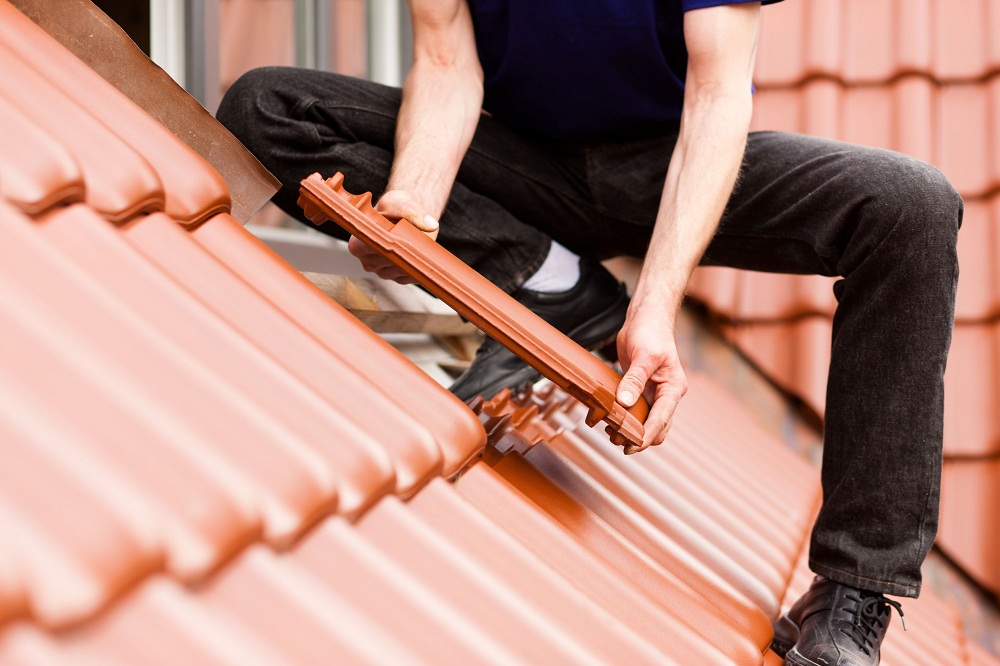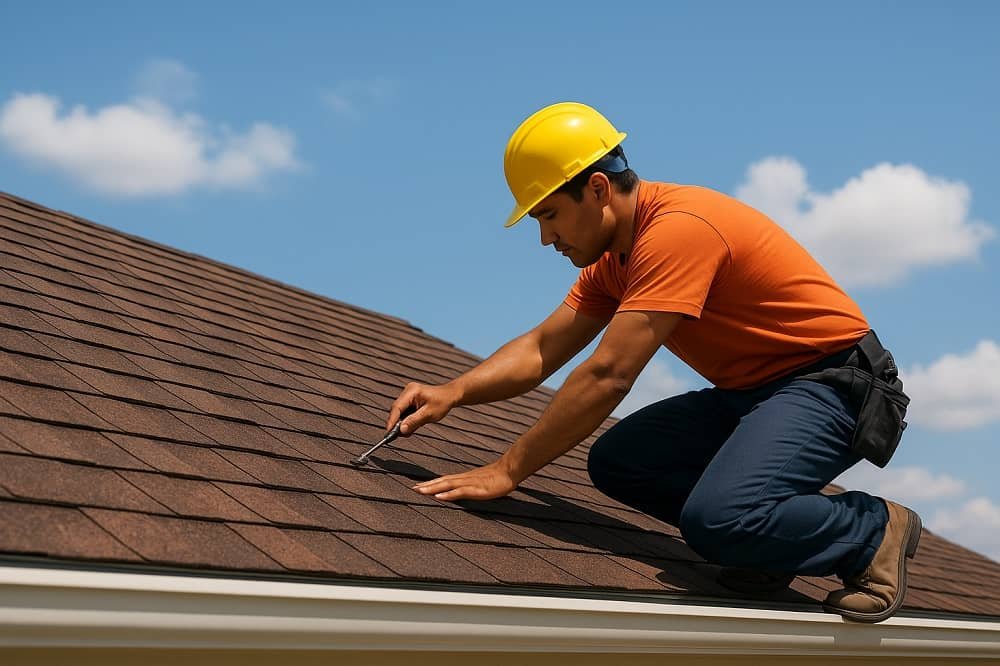Your roof is one of the most vital components of your home, protecting you from the elements and ensuring the structural integrity of the entire building. Despite its importance, roof maintenance often gets overlooked-until there’s a leak or visible damage. Proactive maintenance can extend the life of your roof, save thousands of dollars in repairs, and provide peace of mind.
To help homeowners stay ahead, we’ve created the Ultimate Year-Round Roof Maintenance Checklist. This guide breaks down seasonal tasks and best practices to keep your roof in top shape all year long. Read on.
Spring Roof Maintenance
After winter, spring is the ideal time to assess and address any damage caused by snow, ice, or storms. First, inspect your roof for signs of winter damage. Look for cracked, curling, or missing shingles, as these are common issues that arise after harsh winter weather.
Examine your attic and ceiling for any signs of water damage or active leaks, which could point to hidden roofing problems. It’s also important to check the flashing around chimneys, skylights, and vents, as these areas are particularly vulnerable to wear and tear.
Cleaning and Preventing Future Problems
Next, clean your gutters and downspouts. Leaves, twigs, and debris often accumulate over winter, potentially clogging the system and preventing proper drainage. Ensuring that water flows freely through the gutters and away from your home’s foundation will help prevent costly water damage.
Take the time to trim overhanging branches near the roofline. Trees close to the house can drop leaves, scrape shingles, or even fall during spring storms, all of which can damage your roof. Pruning these branches reduces the risk of both physical damage and gutter blockages.
Lastly, check for mold, algae, or mildew growth. These often appear as dark streaks or patches on shingles and can lead to decay over time. Use a gentle cleaning solution or hire a professional to safely remove any buildup.
Summer Roof Maintenance
Summer heat can put additional stress on roofing materials, especially in regions with high temperatures or intense sun exposure. Start with a visual inspection of your roof. This can often be done from the ground using binoculars or a drone to spot obvious issues like:
- loose shingles
- warped areas
- bubbling on flat roofs
Blisters or bubbles may indicate trapped moisture, which can compromise the roofing membrane.
Enhancing Ventilation and Planning Ahead
Inspect and seal all roof penetrations, including vents, pipes, and chimneys. These areas should be tightly sealed to prevent leaks, and any deteriorated caulk or flashing should be replaced.
Proper attic ventilation becomes particularly important in summer. Without good airflow, your attic can overheat, leading to warped shingles and increased energy bills. Check that attic vents are not blocked by insulation or debris, and make sure there are no signs of pests.
Consider scheduling a professional inspection in the middle of the year. A roofing expert can check for subtle signs of damage, assess the condition of the underlayment, and ensure everything is functioning correctly before extreme weather sets in.
Fall Roof Maintenance
Fall is the most important season for roof preparation, as winter brings snow, ice, and increased risks of water intrusion. Begin by cleaning the roof surface.
Remove fallen leaves, pine needles, and other debris that tend to accumulate in valleys and around ridges. These materials retain moisture and can cause premature wear if left in place.
Gutters should be reinspected and cleaned again in the fall. With falling foliage, it’s easy for gutters to become clogged, leading to standing water or ice dams. If leaf buildup is a recurring issue, consider installing gutter guards to reduce maintenance.
Securing Your Home Before Winter Hits
It’s also important to inspect your roof and attic for any gaps or openings that might allow pests to enter. As temperatures drop, animals like squirrels and birds may try to nest in warm attic spaces. Seal gaps in eaves, vents, and soffits to keep them out.
Check the insulation in your attic to ensure it’s adequate. Good insulation helps retain heat inside the home, reduces energy bills, and plays a vital role in preventing ice dams by keeping the roof’s surface temperature consistent.

Winter Roof Maintenance
Winter roof maintenance is all about prevention and minimizing the stress that snow, ice, and freezing temperatures can place on your roof. Ice dams are a major concern in winter.
These form when warm air from the attic melts snow on the roof, which then refreezes at the eaves, creating blockages that prevent proper drainage. To prevent this, keep your attic well-ventilated and properly insulated so that the roof stays cold and snow melts slowly and evenly.
Staying Safe and Proactive
If heavy snow accumulates, it should be carefully removed to reduce the weight load and prevent leaks. Use a roof rake with a telescoping handle to clear snow while standing safely on the ground. Avoid climbing on the roof during icy conditions, and hire a professional if snow removal is beyond your ability.
After significant snowstorms or periods of high wind, perform quick visual inspections. Look for visible damage to shingles and flashing, and check the attic or ceilings for any new water stains, which could indicate leaks.
Monitoring interior humidity is another critical winter task. High humidity levels can cause condensation in the attic, leading to mold and rot. Use a dehumidifier or attic fan if necessary to maintain a healthy balance.
When to Call a Professional
Not every roofing issue demands immediate replacement, but knowing when to call a professional can save you from bigger problems later. Persistent leaks, noticeable water stains, large sections of missing or damaged shingles, sagging rooflines, and mold in the attic are all signs that warrant expert evaluation. Also, if your energy bills have spiked without explanation, poor insulation or ventilation in your roof may be to blame.
Regular maintenance may involve some effort and minor expenses, but it can prevent much larger costs in the future. Staying proactive protects your home, increases energy efficiency, and ensures the safety of everyone inside. Check out Butler roof parts available here to learn more about roof maintenance.
Make Roof Maintenance a Habit
Your roof stands between your home and the elements-it deserves year-round attention. By following this ultimate checklist, you can avoid surprises, improve energy efficiency, and ensure the safety of your home and family. Make roof maintenance a regular part of your home care routine, and your roof will repay you with years of protection and reliability.
If you want to read more articles, visit our blog.




